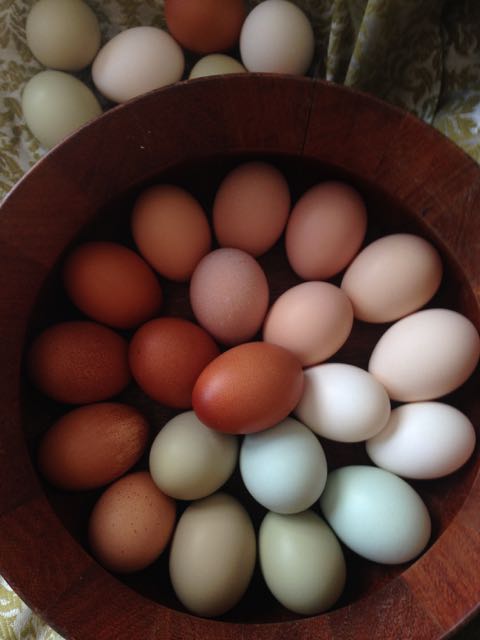Ghost pipe, Monotropa uniflora, is a peculiar perennial found in leaf litter in dark nooks of the Maine forests.
Is ghost pipe a plant or a fungus?
Its energy is sapped from an intimate relationship between a tree and fungus, making ghost pipe a parasitic third-wheel.
Ghost pipe relies upon a relationship with a tree—and its relationship with a mycorrhizal fungus. A third-wheel if you will. Lacking chlorophyll, it does not generate energy from sunlight. This is why it fluroshes in deep, dark leaf litter in shady areas on the forest floor.
Why is ghost pipe white?
Ghost pipe saps energy from the photosynthesis of a host tree, stealing nutrients and carbohydrates from the tree roots through the myccorhizal fungus. This fungi colonize tree roots in a symbiotic relationship, optimizing soil chemistry, to make nutrients available to the tree.

My current personal use for this plant is drying for use in resin crystals and crystal balls. To dry it for later use, I lay it in plastic food storage containers or pencil boxes on a thin layer of floral drying silica gel powder until it is used. Never use silica gel if you plan to ingest it!) I store it in the very bottom of a fridge that lives in my studio. I also store hundreds of mushrooms in this manner.
Is ghost pipe a perennial?
It is not responsible to pick this plant in most areas, as it’s usually less common than on our property. We are fortunate to have dozens of clusters in a relatively small area. Even with the high population here, I still only pick a couple of flowers from each cluster. Ghost pipe is a perennial, which means if you pull up the roots, it may not come back the following year.
Where can I find ghost pipe growing?
On our last property in Bucksport, Maine, ghost pipe is commonly found in damp leaf litter in full shade. Our forested property is predominantly beech and oak in the areas I have found it growing in abundance.

Can You Eat Ghost Pipe?
Ghost pipe isn’t considered to be a raw edible. There are no found reported deaths or hospitalizations from eating ghost pipe, but it’s not recommended. To answer this question, let’s use some sciency words and look at it from a few angles.
A peek at the molecular level of this beautiful plant: Glycosides, Grayanotoxin, and Andromedotoxin
Glycosides
Glycosides are compounds formed from a simple sugar and another compound by replacement of a hydroxyl group in the sugar molecule. Various drugs and poisons made from plants are glycosides. Cardiac glycosides in foxglove flowers can be deadly. One of M. uniflora’s main constituents is salicylic acid, which is also in aspirin
Grayanotoxins and Andromedotoxins
Rhododendron and mountain laurel contain high levels of grayanotoxins. In fact, there are 25 forms of grayanotoxins in rhododendrons. Grayanotoxin I is a glycoside toxin, called andromedotoxin or rhodotoxin. Peterson’s Field Guide to Medicinal Plants & Herbs lists some Native American uses for “Indian-Pipe” (Monotropa uniflora) then adds: “Safety undetermined; possibly toxic – contains several glycosides”.
NOTE: I don’t know much about herbal medicine, but here’s some basic information on uses in herbal medicine. *Read more detailed from our references below.
Ghost pipe cannot be simply munched on, but it can be made into a tincture used in small doses in traditional herbal medicines. It is used in small doses for very specific cases in herbal medicine. It is recommended to try other herbs first. unrelenting pain or anxiety attacks are common aliments treated with ghost pipe.

Herbal Actions: sedative, nervine, antispasmodic, anodyne, diaphoretic
Useful for:
- Overwhelming physical pain (combined with anodyne herbs)
- Migraine like headaches associated with traumatic brain injury
- Anxiety and panic attacks associated with emotional or sensory overload
- Triggering of emotional memories
- Childhood seizures, febrile seizures, and epileptic seizures.
To make a fresh plant tincture: (*see references below)
- Pack plant tightly into a pint canning jar, or less if just for one person giving it’s potency.
- Add 100 proof vodka, filling jar to the top. It must cover all the plants. Use a weight if making a small batch to keep it submerged.
- Shake daily for 2 weeks.
- The herb can be left in the alcohol until consumed, or strained to decant.

Subscribe below to get freshly-published articles about cool plants in your inbox!
References:
Ghost Pipe: A Little Known Nervine by Sean Donahue
Medicinal Plants of the Southern Appalachians by Patricia Kyritsi Howell
USDA Forest Service: Monotropa uniflora – Ghost Plant, Indian Pipe
Botanical Gazette. April 1878. Volume 3, Number 4; pp. 37 – 38. A.H. Young reports on a reaction a young woman had when some of the plant juice of monotropa uniflora got on her lips.
Botanical Gazette. June 1878. Volume 3, Number 6; pp. 53 – 54. Richard E. Kunze writes a reply detailing his medicinal uses of monotropa uniflora over 23 years, with no adverse affects and wonders if the young woman from A.H. Young’s report had a reaction to Rhus toxicodendron (poison oak) instead.
Botanical Gazette. September 1878. Volume 3, Number 9; pp. 79 – 79. A.H. Young asserts he still believes the young woman’s reaction was from monotropa uniflora.
California Department of Fish & Wildlife. SPECIAL VASCULAR PLANTS, BRYOPHYTES, AND LICHENS LIST. April, 2022.
California Native Plant Society Rare Plant Inventory. Monotropa uniflora. https://rareplants.cnps.org/Plants/Details/646
Donahue, Sean. Ghost Pipe: A Little Known Nervine. American Herbalist Guild.
Felter, Harvey Wickes and John Uri Lloyd. King’s American Dispensatory, 1898.
Figura, Tomáš, et al. In vitro axenic germination and cultivation of mixotrophic Pyroloideae (Ericaceae) and their post-germination ontogenetic development. Annals of Botany. 2019 Mar; 123(4): 625–639.
Gupton, Oscar Wilmont. An Analysis of the Taxonomic Criteria as Applies to the Genus Monotropa. The University of North Carolina at Chapel Hill; ProQuest Dissertations Publishing, 1963. 6401852.
ITIS. Integrated Taxonomic Information System – Report on Monotropa uniflora.
Jansen, Suze A. et al. Grayanotoxin Poisoning: ‘Mad Honey Disease’ and Beyond. Cardiovascular Toxicology. 2012; 12(3): 208–215.
Klooster, Matthew R. and Theresa M. Culley. Comparative analysis of the reproductive ecology of Monotropa and Monotropsis : Two mycoheterotrophic genera in the Monotropoideae (Ericaceae). American Journal of Botany. First published: 01 July 2009
Leopold, Susan. A History of Parasitic Plants from Ancient Herbals to Modern Scientific Research. United Plant Savers; audio file; accessed June, 2022.
Millspaugh, Charles Frederick. American Medicinal Plants: An Illustrated and Descriptive Guide to Plants Indigenous to and Naturalized in the United States which are Used in Medicine. See pp. 411 – 414.
Native American Ethnobotany Database. Online. Accessed June, 2022.
O’Neil, Alexander R. The Population Genetic Structure of the Mycoheterotroph Monotropa uniflora L. in North America.
Tsukaya, Hirokazu. Flowering time of two saprophytic plants, Monotropa uniflora L. and Monotropastrum humile (D. Don) Hara in Japan. Journal of Plant Research.
USDA Forest Service Pacific Northwest Research Station; Climate Change Vulnerability Assessment for the Chugach National Forest and the Kenai Peninsula. See Table 6-4—List of rare plant taxa tracked by the Alaska National Heritage Program occurring in the assessment area.
Winston, David. David Winston’s Center for Herbal Studies. Facebook post about Monotropa uniflora or Indian Pipe.



